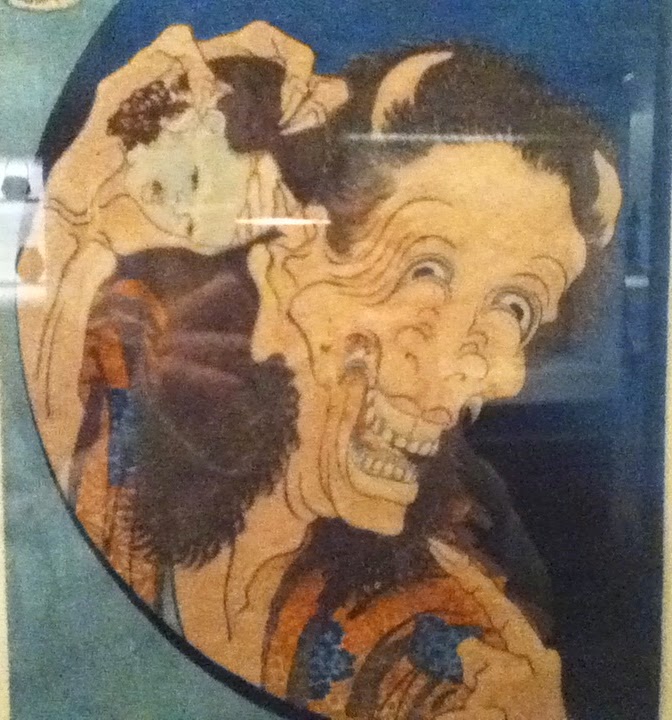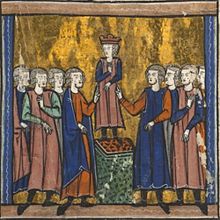I’ve been itching to revisit the Chicago Art Institute, and over Thanksgiving I got my wish. This time we were able to tour the entire museum, including a special exhibit on ghosts and demons in 19th century Japanese prints.
One of the most ingenious pieces on display depicted a scene from a kabuki performance. As you can see, the center figure is pouncing upon a hapless damsel, having transformed from a maiden to a ghoul. This required a rapid costume change from the actor, which we can observe by turning a flap on the print. Kind of like a children’s book.
 |
| Turn to the right, and it’s a woman. |
 |
| To the left, and it’s a ghoul. |
The second print was far more frightening. In it we see a ghost made of ceramic plates, rising into the coal-black sky bent on haunting her murderous husband. According to legend, he slew her for breaking the dishes, but in death she found power that she never had in life.
Hide your eyes, because this next print is even spookier. This time a ghoul is in the bedroom, peeking through the mosquito netting at the treacherous couple who drowned him. Aren’t the colors incredible? And look at those tendrils by the ghost’s skull. They remind me of seaweed, perhaps alluding to his watery grave.
Alright everyone, calm yourselves. Warai Hannya, pictured below, is our last demon. She was known for preying upon children and even clutches a head in the print. Nice lady, right?
Now that you’ve been thoroughly spooked by the bad guys, it’s time I introduced you to a hero. Meet Shōki the Demon Queller. In the print below you can see him astride a slavering tiger, mincing goblins to chutney with a wicked-blue sword. Pictures like this were displayed for the Boys’ Day festival, and Shōki banners were used as a safeguard against disease. I guess that sword kills bacteria as well as demons.
What did you think of the prints? Do you have a favorite? Or are they too grotesque for that?













